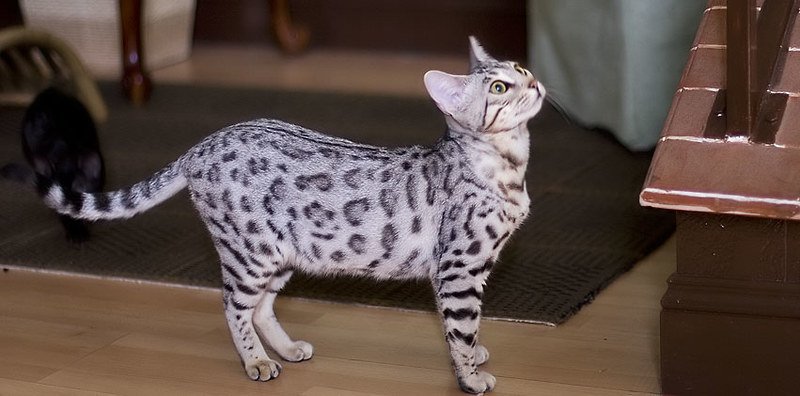Welcome to our comprehensive guide on addressing Bengal cat behavior problems. As proud owners of Bengal cats ourselves, we understand the challenges that can arise when these beautiful and intelligent felines display certain behavioral issues.
In this article, we will provide practical solutions and tips to help you effectively manage and overcome these behavior problems to ensure a happy and harmonious relationship with your Bengal cat.
Understanding Bengal Cat Behavior Problems
It is important to understand the behavior of Bengal cats, given their distinctive traits as a breed. Bengal cats are known for their high intelligence, energy, and playfulness. However, they can also face behavioral challenges that require attention and understanding on the part of their owners.
Behavioral Challenges
Bengal cats may exhibit certain behavior problems, including aggression, inappropriate elimination, and excessive scratching. Understanding the causes behind these behaviors is crucial for finding appropriate solutions.
- Aggression: Some Bengal cats may display signs of aggression, which can stem from various factors such as fear, stress, or territorial instincts.
- Inappropriate elimination: Avoiding the litter box can be a common issue among Bengal cats, often due to problems with litter box hygiene or a preference for certain substrates.
- Excessive scratching: Bengal cats have a natural inclination to scratch, but when it becomes excessive or destructive, it can be a behavior problem that needs to be addressed.
Potential Solutions
To address these behavior problems, it is essential to create a stimulating and enriched environment for your Bengal cat. Providing mental and physical stimulation through interactive toys, playtime, and environmental enrichment can help fulfill their instinctual needs.
In addition, ensuring a clean litter box environment with suitable litter and regular cleaning can promote proper elimination habits. Providing appropriate scratching posts or surfaces can redirect the scratching behavior to prevent damage to furniture.
Remember, behavioral challenges should always be addressed with patience, consistency, and positive reinforcement techniques. Seeking professional help from a veterinarian or a cat behaviorist can provide further guidance if needed.
| Behavior Problem | Cause | Solution |
|---|---|---|
| Aggression | Fear, stress, territorial instincts | Provide a safe and secure environment, positive reinforcement training, and consultation with a behaviorist if necessary. |
| Inappropriate Elimination | Litter box hygiene, substrate preferences | Maintain clean litter boxes, experiment with different types of litter, and consult a veterinarian for any underlying medical issues. |
| Excessive Scratching | Natural instinct, boredom, lack of suitable scratching surfaces | Provide appropriate scratching surfaces, redirect behavior to designated areas, and engage in interactive play sessions to channel their energy. |

Managing Bengal Cat Behavior Problems
When it comes to managing Bengal cat behavior problems, providing adequate stimulation is key. Bengal cats are highly intelligent and energetic, and without proper outlets for their energy, they may develop destructive behaviors. Both physical and mental stimulation are essential to keep your Bengal cat engaged and satisfied.
The Importance of Physical Stimulation
Bengal cats have a natural instinct to hunt and play. To satisfy their need for physical stimulation:
- Provide plenty of interactive toys, such as feather wands or puzzle feeders, to keep your Bengal cat active and entertained.
- Set aside dedicated playtime each day, engaging in interactive games that mimic hunting, like chasing a toy or hiding treats for them to find.
- Consider installing a cat tree or providing climbing shelves to encourage your Bengal cat to climb and explore.
The Significance of Mental Stimulation
In addition to physical exercise, mental stimulation is crucial for Bengal cats. They are intelligent and curious creatures that thrive on mental challenges. Here are some ways to provide mental stimulation:
- Engage in training sessions with your Bengal cat, teaching them tricks or basic commands for mental stimulation.
- Rotate toys regularly to keep their interest and curiosity piqued.
- Use food puzzles or treat-dispensing toys to provide mental challenges while they eat.
- Create a stimulating environment by introducing new scents, textures, and sounds through toys or play areas.
Companionship and Playtime
Bengal cats are social animals that crave companionship. Loneliness can lead to behavioral issues. Consider the following:
- If possible, adopt two Bengal cats to provide each other with constant companionship.
- Ensure you spend quality time with your Bengal cat, engaging in interactive play and providing affection and attention.
- Introduce variety in playtime, using toys that promote exercise and mental stimulation.
Litter Box and Scratching Post Management
Bengal cats are known to be territorial. To prevent behavior problems related to their litter box and scratching needs:
- Provide multiple litter boxes in different areas of the house, ensuring they are easily accessible and kept clean.
- Choose litter that your Bengal cat prefers and engage in regular litter box maintenance.
- Place multiple scratching posts around the house to satisfy their natural urge to scratch and stretch.
- Encourage your Bengal cat to use the scratching posts by using catnip sprays or toys.
Conclusion
In conclusion, Bengal cat behavior problems are a common concern for owners, but rest assured, there are effective solutions and practical tips to address them. By implementing proactive measures and understanding your Bengal cat’s needs, you can minimize these behavior problems and foster a harmonious relationship with your exotic pet.
To minimize behavior problems, it is crucial to provide your Bengal cat with ample mental and physical stimulation. Engage them with interactive toys, puzzles, and regular playtime to keep their active minds occupied. Additionally, creating a suitable environment that includes scratching posts and designated areas for climbing and exploring will help satisfy their natural instincts.
Understanding your Bengal cat’s specific needs is key to managing their behavior problems. By providing a suitable companion and paying attention to their behavioral cues, you can identify and address any underlying issues. Additionally, ensuring a clean litter box and offering appropriate litter options will help prevent litter box avoidance.
Implementing the solutions and tips discussed in this article will improve your Bengal cat’s behavior and strengthen your bond with them. Remember, patience and consistency are vital when addressing behavior problems. With dedicated effort and a well-informed approach, you can enjoy a peaceful and joyful coexistence with your Bengal companion.
FAQs
Q: What are some common behavior issues seen in Bengals?
A: Bengals are known to exhibit behaviors such as excessive jumping, scratching, and territorial marking.
Q: How can I stop my Bengal from jumping on counters?
A: To prevent your Bengal from jumping on counters, provide alternative high spaces for them to climb and explore, use deterrents like double-sided tape or aluminum foil, and reward good behavior when they stay off the counters.
Q: Is it normal for Bengal kittens to be more energetic than other breeds?
A: Yes, Bengal kittens are known for their high energy levels and playful nature, which is characteristic of the breed.
Q: What are some tips for dealing with Bengal cat behavior issues?
A: Providing sufficient physical and mental stimulation, using positive reinforcement training techniques, and addressing any underlying health issues are key in managing Bengal cat behavior problems.
Q: Can Bengals be trained to walk on a leash?
A: Yes, with patience and proper training, Bengals can be taught to walk on a leash using a harness specially designed for cats.
Q: How can I discourage my Bengal from scratching the furniture?
A: Providing appropriate scratching posts, regularly trimming your Bengal’s nails, and using deterrents like citrus scents or sticky tape can help discourage them from scratching furniture.

Hey guys, My name is Simon Smith. I’m from Canada and live near Victoria
I live with my sweet family and have 20+ Ragdolls of different types. I love them as my own children. My profession is as a hotel manager.
I love to keep Ragdolls and grow their breeder case. I have 7 years of experience.
I’m an expert in cat care. So, I’m here to provide you with new information about my cats daily. This is my personal blog website, so I request that you kindly visit our site daily.
If you’re a Ragdolls lover and you have any questions or confusion about cats, text me on the Contact Us page or Gmail.
Thank u
